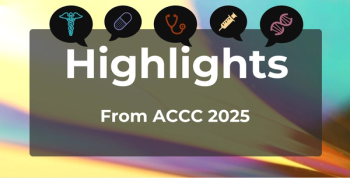
FDA Expands Patient Inclusion Criteria for Cancer Clinical Trials
In an effort to increase patient accrual, broaden patients’ access to cancer clinical trials, and lead to trial results that better represent treatment effects in the real world, the FDA published 4 draft guidances and 1 final guidance to promote the inclusion of pediatric patients and patients with comorbidities that can occur alongside cancer.
The FDA this week published 4 draft guidances and 1 final guidance in an effort to broaden patient participation in cancer clinical trials and to promote the inclusion of pediatric patients and patients with comorbidities that can occur alongside cancer, in an effort to increase patient accrual, broaden patients’ access to clinical trials, and lead to trial results that better represent treatment effects in the real world.
“When drug developers design a clinical trial, they identify eligibility criteria to define what types of patients qualify for participation in the trial. They base the eligibility criteria on factors such as the mechanism of action of the drug, characteristics of the disease, the expected toxicities of the investigational drug, and the ability to recruit trial participants from the patient population to meet the objectives of the clinical trial,” said FDA Commissioner Scott Gottlieb, MD, in a
“However, in trials testing treatments for cancer, some eligibility criteria have become commonly accepted over time or used as a template across trials without a clear scientific or clinical rationale or justification. In other cases, eligibility criteria can be deliberately restrictive, even though it is not clinically merited. As a result, cancer patients are often unnecessarily restricted from participating in trials.”
Cancer Clinical Trial Eligibility Criteria: Minimum Age for Pediatric Patients; Draft Guidance for Industry
The first guidance, “
Traditionally, pediatric patients have not been included in adult clinical trials that generally specify that a patient must be 18 years or older to be included. Typically, pediatric trials of the same drug have been initiated after 1 or more adult clinical trials have been completed, or after the drug or treatment had received initial FDA approval for adults. This has “delayed the development of and access to potentially effective new cancer drugs for the pediatric population," according to the guidance. This guidance makes recommendations for the inclusion of pediatric populations including both children, aged 2 to 11 years, and adolescents, aged 11 to 17 years.
Cancer Clinical Trial Eligibility Criteria: Patients with HIV, Hepatitis B Virus, or Hepatitis C Virus Infections Guidance for Industry
The next
FDA recommendations include considering clinical trial eligibility based on CD4+ T cell counts, history of AIDS-defining opportunistic infections, and exclusion of specific antiretroviral therapy drugs, among others.
Cancer Clinical Trial Eligibility Criteria: Patients with Organ Dysfunction or Prior or Concurrent Malignancies Guidance for Industry
The FDA
The FDA recommended that for patients with organ dysfunction, where pharmacokinetics and major routes of elimination are not well understood, “it is reasonable to enroll only patients with relatively preserved organ function (primarily renal and hepatic) in cancer clinical trials. As data on toxicity including preclinical and clinical toxicity, [pharmacokinetics], and/or pharmacodynamics become available during drug development, protocols should be revised to include patients with compromised organ function where safe parameters regarding dosage adjustments have been determined,” read the guidance.
Cancer Clinical Trial Eligibility Criteria: Brain Metastases Guidance for Industry
In the final draft
Each year, an estimated 70,000 patients living with cancer in the United States are diagnosed with brain metastases. Certain malignancies, such as melanoma, lung cancer, and breast cancer, have shown an increasing incidence of brain metastases. The FDA wrote that “patients with cancers that commonly metastasize to the brain (eg, lung cancer, breast cancer, melanoma) should be included in early drug development trials, either in separate cohorts or in cohorts with planned subset analyses to assess preliminary efficacy and toxicity in patients with brain metastases.”
Considerations for the Inclusion of Adolescent Patients in Adult Oncology Clinical Trials Guidance for Industry
The
“The FDA issued new recommendations for broadening cancer trial eligibility criteria that are designed to help address these challenges. A clinical trial that’s more representative of the patient population can maximize the generalizability of the trial results and the ability to understand the therapy’s benefit-risk profile across the patient population likely to receive the drug in clinical practice,”
Newsletter
Stay ahead of policy, cost, and value—subscribe to AJMC for expert insights at the intersection of clinical care and health economics.












































